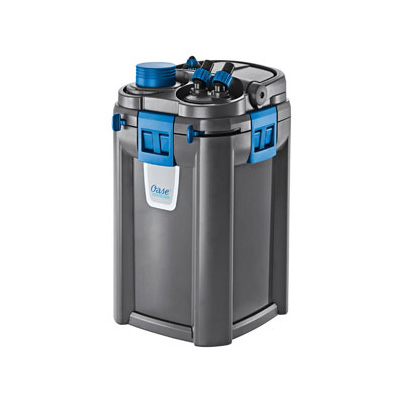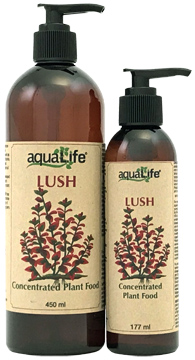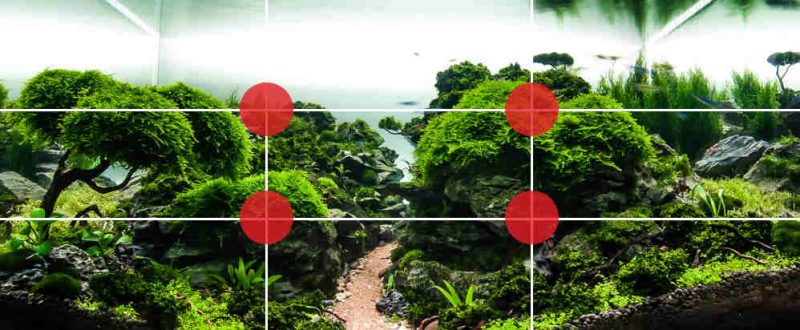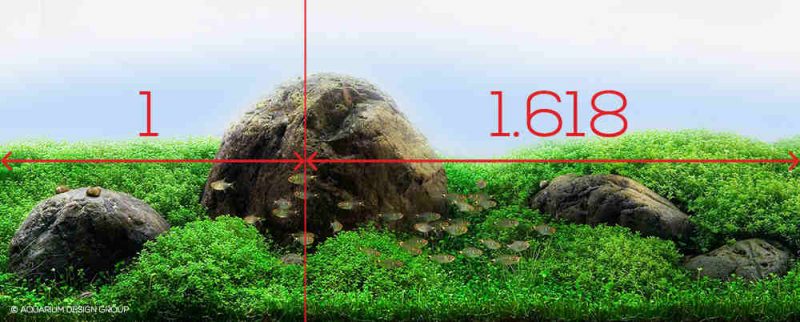What is Aquascaping?
Aquascaping is the term aquarium hobbyists and professional fishkeepers use to describe the process of building aquatic plants, stones, driftwood, and substrates to design a beautiful tank setup. Sometimes referred to as “underwater gardening,” there are several different styles of aquascaping aquarium owners build: Dutch, Jungle, Iwagumi, and Nature aquarium styles.
Aquarium keeping has become far more than about keeping fish. It is an art where one can show off their aquascaping talent. Freshwater and saltwater reef tanks bring beauty to your home and are gorgeous centerpieces in your living room, dining area, bedroom, or study. Rimless, rimmed, glass, acrylic, 20 gallon, 300 gallon – the choice is yours! We cover more about choosing your aquascaping tank here. With aquascaping and fishkeeping, your options are endless.
New to the hobby? In this blogpost, we’ll help you get started on aquascaping your new aquarium.

Aquascaping for Beginners
Looking for some tips on aquascaping for beginners? If you are new to aquascaping and looking to get started with this unique and rewarding hobby, there are a few basic principles you’ll need to know:
• Simplicity – With aquascaping, the general rule is that “less is more.” A common temptation is to purchase as many aquarium plants as possible. However, in doing this, you may overcrowd your tank and make it look a little busy. Try to keep your aquarium design simple!
• Variety – Although you’ll want to keep your aquarium style simple, you’ll still want to vary it up with a few plants. Even if you’re going for a particular theme or aquascaping style, make sure you have at least several different species of plants to keep your aquascape looking interesting.
• Proportion – Keep your aquascape proportionate. Leave as much open space as filled up space in your tank. Don’t only use large-leafed plants since they will take away from the proportion and depth of your setup. Proportion is also critical for achieving certain aquascape styles. We’ll discuss this in more detail below.
• Determination – Finally, stay determined! Aquascaping is a learning process. Be patient, as you most likely will be deconstructing and reconstructing your tank to achieve the right look. Also, be prepared to experiment with your tank – the more you work at it, the more experienced you will become. If you ever feel frustrated, watch videos of expert aquarium keepers or look up tips on how to perfect your aquascape.
Aquascaping Products You’ll Need to Get Started
Aquarium Lighting
Perhaps the essential factor to your aquarium’s well-being is the lighting. To maintain the proper health of your aquatic plants, you’ll need quality lighting and the appropriate amount of illumination.
If you are wondering what lighting you should invest in for your aquarium, the short answer is – it depends. Hobbyists use LED lights, fluorescent lights, and incandescent lights. LED lighting has an excellent lifespan and is highly efficient, so many hobbyists opt for them. However, be prepared for a higher cost than fluorescent or incandescent lighting. Fluorescent lights are a better choice than incandescent lighting because they are more efficient and last longer. However, incandescent lighting is the most affordable. In addition to the type of lighting, you’ll want to factor in several key points – color spectrum, light intensity, and light spread.

- Color spectrum – consider the temperature of lighting for your tank. Most plants thrive under a wide range of Kelvin, so your choice of the color spectrum comes down to your preference. Many aquarium keepers prefer a white, neutral light from around 6500 to 7000K since that range resembles natural daylight.
- Light intensity – how bright should my aquarium lighting be? This will depend on the type of plants you plan to grow in your tank. For example, low lighting is suitable for Anubias, Cryptocoryne, and ferns. Medium lighting is ideal for stem plants and most other aquatic plants, except carpeting plants. Finally, high lighting can grow almost every plant; however, please remember that you will need to add CO2 to keep up with plant growth and minimize algae spawning.
- Light spread – Finally, you’ll also want to factor in light spread. Most aquarium lights have about 1 foot of spread. The amount of lights required will depend on the size of your aquarium and the light spread needed for your plants.
Aquarium Filters
Aquarium filtration is another critical component of your aquarium setup. There are various types of filters that you can invest in. However, we recommend getting the best one for your fish and aquarium setup. There are submersible or non-submersible filter types. There are six major types of filters that you can choose from:
Filter Types
• Canister filters – When it comes to providing biological, mechanical, and chemical filtration, the canister filter is the most efficient. It has excellent filtering power. However, it is a more expensive option when compared with other filter types.
• Sponge filters – These are mechanical and biological filters typically powered by an external air pump. The air pump on a sponge filter draws water through the special sponge, which then traps the bacteria inside. They are pretty efficient for smaller-sized aquariums.

• Box/corner filters – These filters draw the water in through a box. They are highly efficient, but the downside is that they take up a lot of space in your tank and aren’t the best for aesthetic aquascaping or for small tanks with little room, to begin with.
• Under gravel filters – These are highly effective biological filters and are pretty easy to maintain. They are also the most affordable type of filter to run. You will need to clean the gravel during a water change. However, you will need other types of filters to help maintain your tank.
• Hang on back filters – Also called power filters, these hang on the back of your aquarium (hence the name), and it doesn’t take up much space since it is located in the back of your tank. Unfortunately, you’ll probably get poor chemical filtration with this filter type.
• Trickle filters – The trickle filter, otherwise known as the wet/dry filter, is given its name because the filter media is exposed to the water and large amounts of air and also because water tricks through the biological filter media. It is low maintenance. However, it can initially be challenging to set up. Also, trickle filters aren’t the best in mechanical and chemical filtration. These filters are the best for larger tanks that are over 80 gallons.
Liquid Fertilizers
Liquid fertilizers will help keep your plants, fish, and invertebrates healthy. The amount of fertilizer required depends on the lighting and CO2 in the aquarium. To ensure the best health for your aquarium, supplements like Flourish (pictured here) and AquaLife plant supplement products will help enhance your tank’s well-being and its inhabitants.
Two types of fertilizers are needed to keep your aquarium healthy. These are macro-nutrients and micro-nutrients. Use a proper dose of both to keep your aquatic environment balanced.

Driftwood
One of the most natural-looking ways to beautify your tank is by using driftwood in your aquascape. To make an eye-catching Jungle or Nature aquarium style, you can incorporate Black Forest driftwood, Bonsai wood (with and without rock), Spider wood, Octopus wood, or Tiny Ramous wood.
In addition to giving your aquarium a natural look, these woods also provide hiding places for your fish and invertebrates. Shop driftwood products online at SevenPorts today to add to your aquascape!

Rocks
Rocks often serve as one of the main focal points of your aquascape. For an Iwugami setup, you’ll need several stones for a simple design, although they work for Nature and Jungle aquarium styles. We have several Seiryu stones, Samurai stones, mountain stones, river rocks, and more.
As a new aquarium hobbyist, you’ll need to be aware of the fact that rocks can raise pH, GH, or KH slightly. Try to select rocks that have textures and colors that complement each other.

Substrates/Soil
The substrate is one of the essential aspects of your aquarium. There are several benefits to substrate in your aquarium:
- Substrates or soil are aesthetically pleasing in an aquascape tank.
- It provides plenty of space for good bacteria.
- It also provides space for fish to burrow and dig for food.
Not only do aquascape plants get their nutrients through their leaves, but also their roots. This means that selecting a suitable substrate or soil is critical to the health of your plants. Learn more here about the importance of planted aquarium substrate.

What is The Rule of Thirds in Aquascaping?
You may have heard of the Rule of Thirds in art class, and if you are a photographer or are familiar with photography, you most certainly have listened to this concept. Aquascaping is all about making your tank look pretty. Utilizing the Rule of Thirds will help you visualize your aquarium in nine equal parts. Place your aquarium items, like rocks, substrates, plants, and decorations, in such a way that you can “draw” four imaginary intersecting lines (two horizontal and two vertical) to create a “grid,” where you can create a focal point. A good understanding of the Rule of Thirds will help you make an eye-catching setup that will be a great conversation starter!

What is the Golden Ratio?
Another key term you’ll hear in aquascaping is the Golden Ratio. In a nutshell, the Golden Ratio is a rule that the Greeks developed. They figured that a ratio of 1:1.618 was the most appealing to the human eye. This concept is still applicable to artists and aquarists today. You want to gently guide the viewer’s eyes to the focal point of the tank which focuses the eye to either the right or the left, rather than the center.
Please Note: With a smaller aquarium, you’ll want to ensure that you have only one focal point and several secondary points. Larger aquariums should have more than one focal point.

Aquascaping Styles
Next, we’ll talk about some popular aquascaping styles you’ll find in the hobby. We briefly touched on them already earlier in our article. There are four primary styles of aquascaping:
The Dutch Aquarium
In the 1930s, in the Netherlands, the Dutch aquarium style became famous as a hobby. This style focuses on the arrangement of the aquarium plants in a freshwater planted tank setup. If you want an aquascape that focuses on the texture, height, and color of your plants, complemented with a few colorful fish (such as Neon Tetras), you’ll enjoy this style. The Dutch style is characterized by not using driftwood or hardscape materials (such as rocks and stones). The Dutch aquarium style takes practice and patience to perfect.


The Iwagumi Aquarium
This Japanese aquarium style is very minimalist, focusing on the design of hardscape (rocks). Although this aquascape style looks easy, the proportions and layout of the stones require a skill. With an Iwagumi style tank, you will only use one to three species of aquatic plants. Typical setups for a Japanese Iwagumi aquarium style are three primary rocks. The largest is the main focal point. Two smaller rocks are then added to complete the design. To help create harmony and balance in the tank, the three stones should have the same color and texture.
The Nature Aquarium
Introduced by Takashi Amano in the 1990s, this aquarium style is one of the most popular. Many hobbyists enjoy the nature aquarium because its design simulates a real-world tropical rainforest, mountain, hillside, beach, or valley setup where fish and invertebrates would live out in the wild. For a nature aquarium, using hardscape materials like driftwood, rocks, and plants will play a vital role in bringing your Nature-styled aquarium to life!


The Jungle Aquarium
The jungle aquarium emulates the Amazon basin, another aquatic jungle environment where fish and other livestock thrive. This aquarium style is popular for larger aquarium setups. It is much unlike the simple Iwagumi style, characterized by many species of plants, making for an unruly and wild aquascape. Ideally, if you are aquascaping a Jungle styled aquarium, you’ll want to strive for a dense setup but still find a way to maintain and nurture your plants, fish, and invertebrates.
What is Aquascaping? In Conclusion
Aquascaping can be a rewarding hobby. However, it takes time, dedication, and patience before you begin to see the fruits of your labor. A good understanding of the balance of your aquarium, the plants, livestock like fish and invertebrates, lighting, filtration, substrates, hardscapes, and basic aquascaping techniques will take time and practice. If you have questions about which products to use, what aquarium to buy, or how to aquascape your tank, check out our 101 aquascaping techniques guide, or please give the experts at SevenPorts a call at 1 (626) 333-5372.
Featured Articles:
Aquascaping with Jeff Miotke Part 1 Hardscaping with Q&A
Aquascaping with Jeff Miotke Part 2 Planting a Rimless Aquarium with Q&A
Professional Tools for Cultivating Your Planted Aquarium
Aquascaping 101: An Aquascaping Technique Guide
Planted Aquariums: Quick Tips for Success
Getting Started in Planted Aquariums
Frequently asked Questions about CO2, Diffusers, and Glassware
